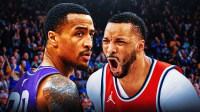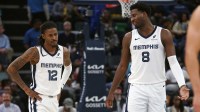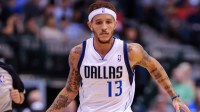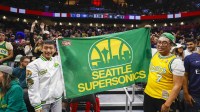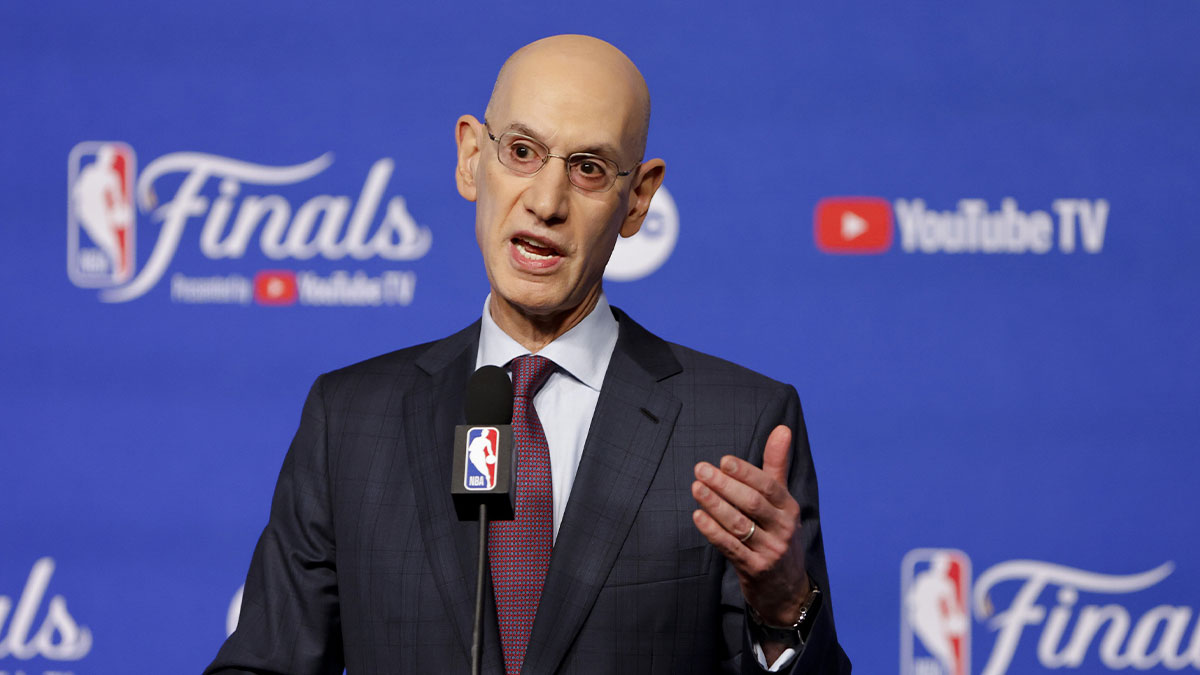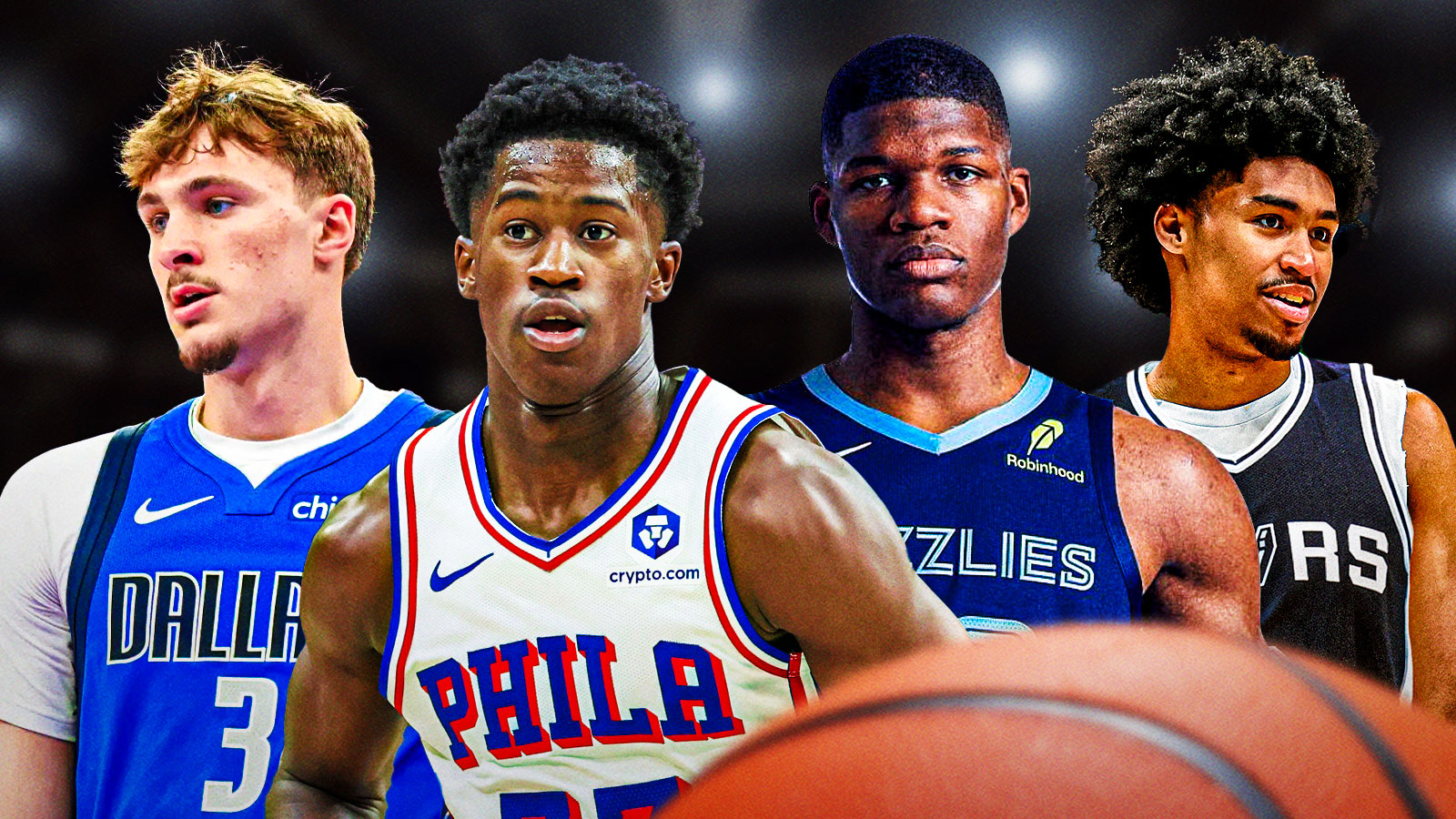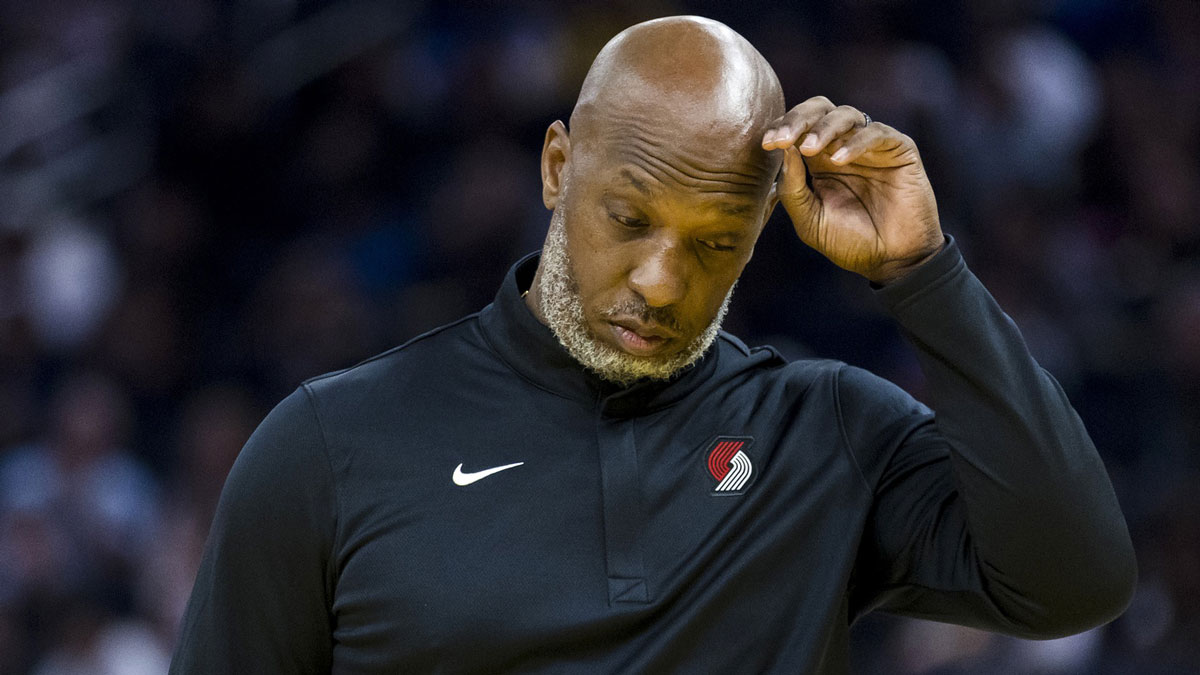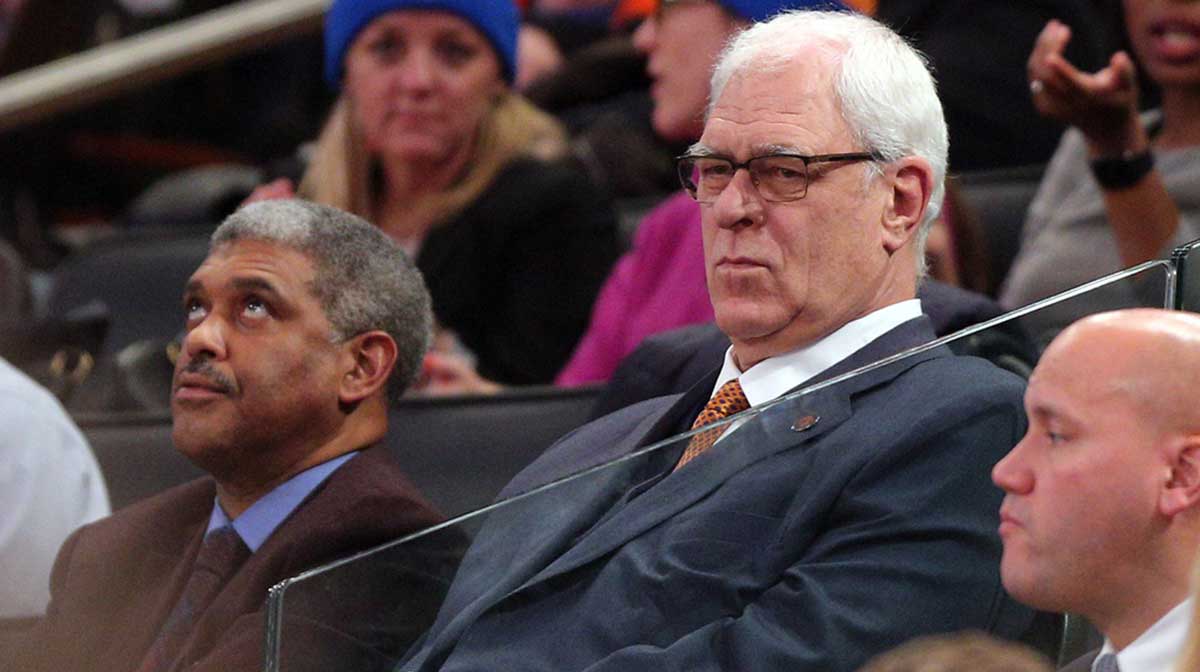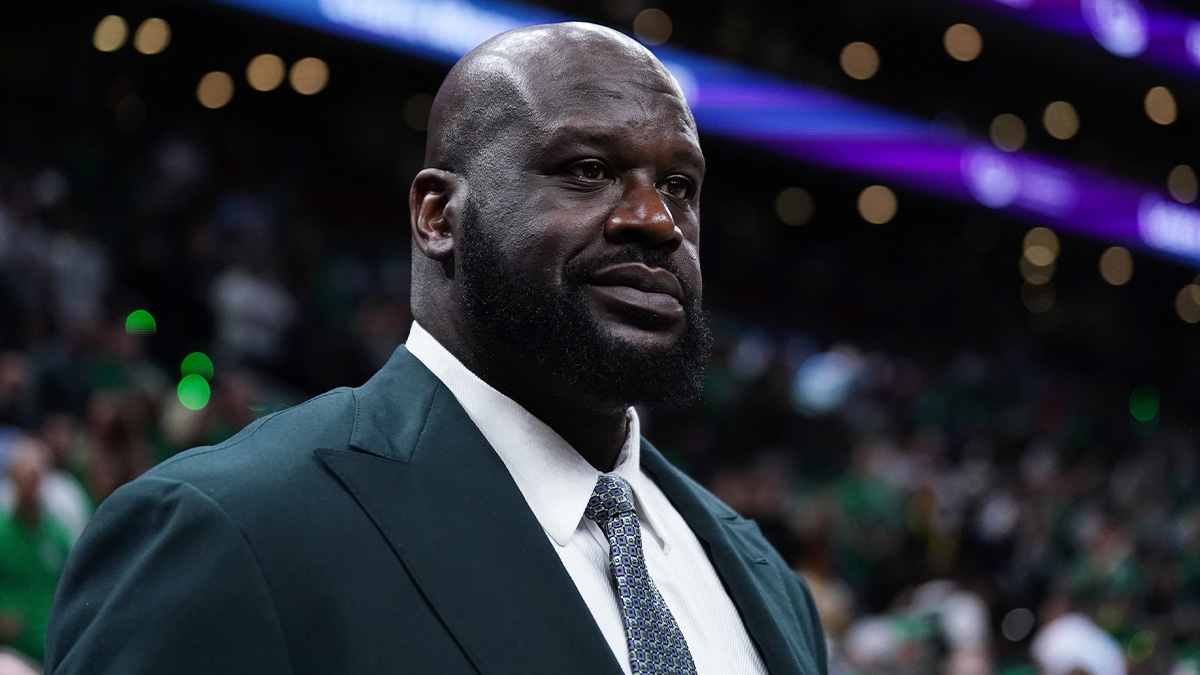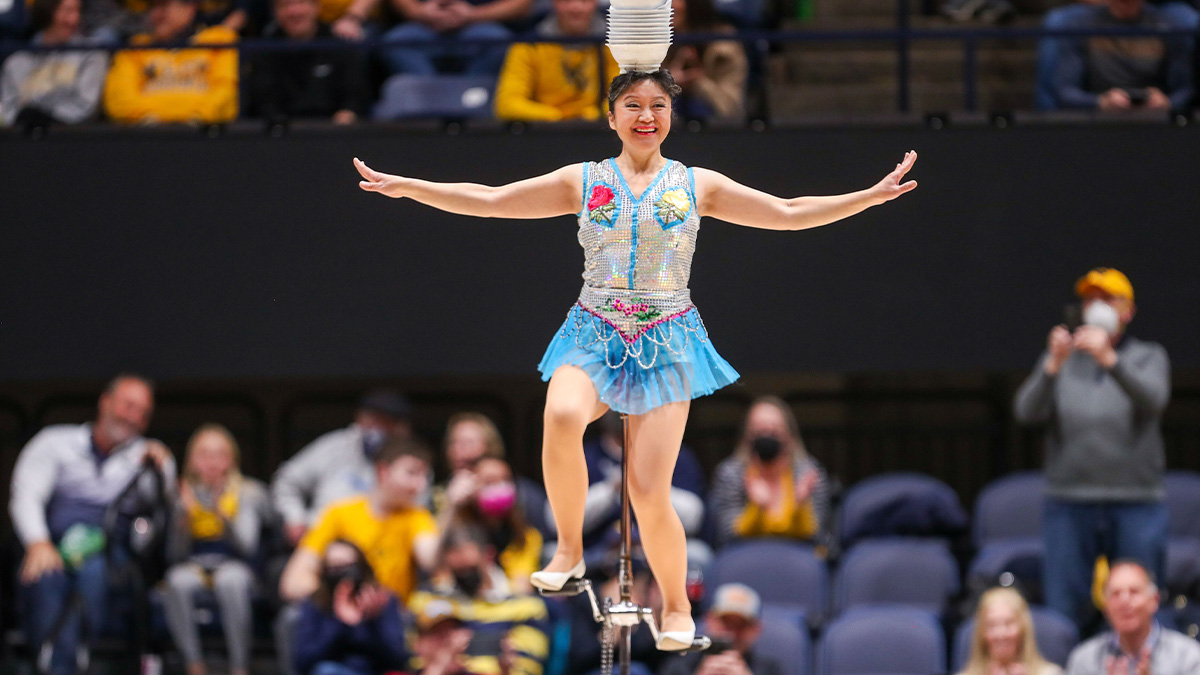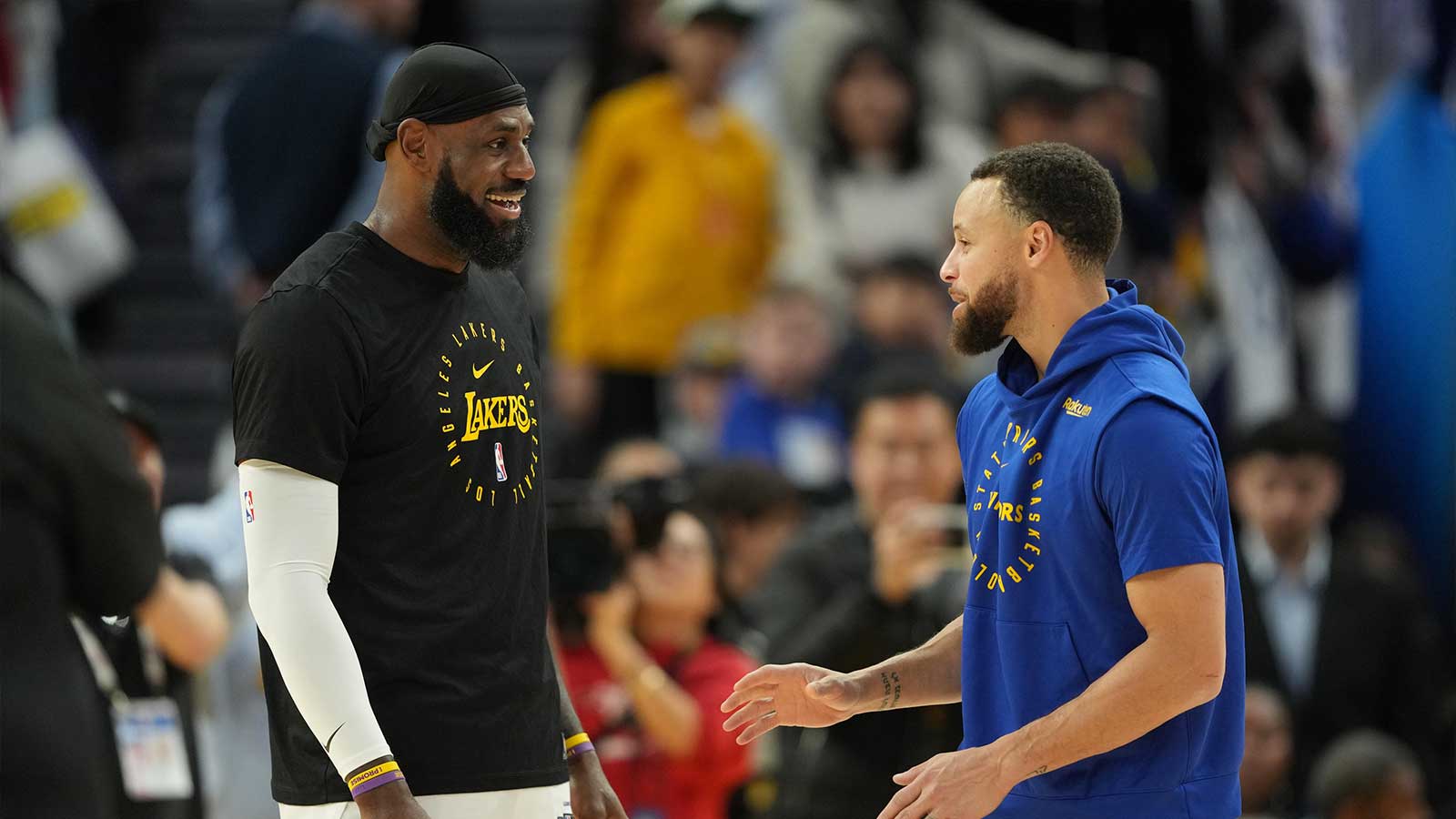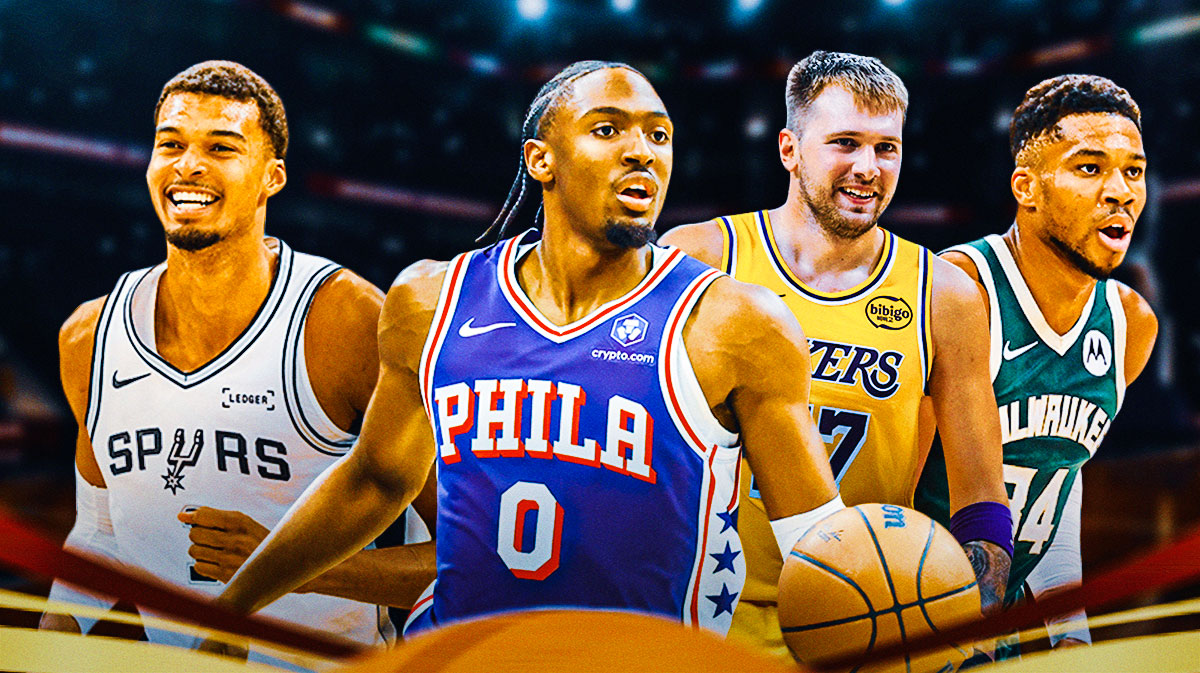Undrafted players are common in the NBA. More often than not, they serve as third string players that would usually play once the game is down to its final minutes. Other times, they don’t even get to play on the NBA hard court due to a stacked rotation. In fact, a lot of them get relegated to the NBA G-League instead. Thus, they barely get a chance to showcase their wares in the NBA stage. Today, though, we're going to talk about the top undrafted NBA players in history.
There are some notable undrafted players who defied the odds by making the most out of the opportunity given to them. As a result, they emerge to become a household name in the NBA through their talents and hard work. Because of these players succeeding in their underdog stories, there is no question that they served as an inspiration to younger players where not getting drafted is just another passable obstacle to play in the brightest basketball stage. In fact, according to Ridiculous Upside, the number of undrafted players making the final roster has been on a steady rise since the 1989-1990 season. Until 2019, there have been 691 players who can say they played in an NBA game.
For this piece, let’s rank and update the top undrafted NBA players in history that have carved a name for themselves in the league.
Honorable Mention
https://www.youtube.com/watch?v=7TOUYivbbLI
The players that barely made the cut are Dallas Mavericks’ guard J.J. Barea, retired guard José Calderón, and former Cleveland Cavalier David Wesley.
10. Jeremy Lin

Career stats: 11.6 points, 4.3 assists, 2.8 rebounds, 1.1 steals, 0.4 blocks
Awards: 1x NBA Champion
I don’t think anyone can forget how Jeremy Lin won the hearts of the world. Despite having a rocky road in his basketball career since college, Lin made a name for himself in the NBA. At first, Lin aimed to play for his dream schools in Stanford University and University of California, Los Angeles. However, none of them would take in the talented guard. As a result, Lin would suit up for one of the two schools that guaranteed a spot on their basketball team, Harvard.
According to the Charlotte Hornets’ official website, Lin said “Harvard and Brown were the two schools that really wanted me to go (and play basketball). Stanford and UCLA were my dream schools but that didn’t work out (athletically).”
Lin shined in his stint with Harvard, as he collected All-Ivy League team honors for three straight years (2008-2010). He would even become one of the best basketball players in Harvard history, as Lin registered 1,483 points, 487 rebounds, 406 assists, and 225 steals in four seasons. The Taiwanese-American standout was the first to do it in a Harvard uniform. He also averaged 12.9 points, 4.3 rebounds, and 3.5 assists per game. Although Lin had a productive showing in college, it was not enough to convince NBA teams to draft him in 2010.
After going undrafted, Lin agreed to play for the Dallas Mavericks in the NBA Summer League in order to keep his NBA dream in striking distance. In his Summer League stint, Lin put up 9.8 points, 3.2 rebounds, while shooting an efficient 54.5% overall. This allowed him to earn a deal with the Golden State Warriors, allowing him to reach his NBA dream.
Serving a bench role for the Warriors, Lin did not really have a productive NBA showing in his rookie year as he also split his time with the Reno Bighorns in the NBA D-League (now called NBA G-League). He only averaged 2.6 points, 1.4 assists, and 1.2 rebounds per game. However, Lin would find a breakthrough when the Knicks signed him in 2011 just after being waived by the Houston Rockets.
After being assigned to the Maine Red Claws by the Knicks, Lin found his way again to the NBA stage and started the Linsanity wave. On February 4, the former Harvard standout lit up the New Jersey Nets as he produced 25 points, seven assists, and five rebounds which ended the Knicks’ slump during that season. Lin would continue to shine while playing for the Knicks, as he made the most out of his playing time with the team’s stars Carmelo Anthony and Amare Stoudemaire sitting out.
The Linsanity movement saw the Knicks guard produce memorable performances, which included his first double-double performance against the Wizards where he collected 23 points and 10 assists. Aside from this, Lin would also make his mark by out dueling the late Kobe Bryant by scoring 38 points to sink the Los Angeles Lakers, 92-85.
The Knicks guard would also prove to everyone how he can be dangerous in the clutch. In a game against the Minnesota Timberwolves, Lin would make the game-deciding free throw with under five seconds left in the game which gave the Knicks a 100-98 win. Aside from this game, Lin nailed the game-winning three point shot at the top of the key against the Toronto Raptors, which earned the Knicks a 90-87 victory.
Linsanity was indeed one of the exciting stretches that has happened in recent memory. In 13 games, Lin emerged to be a star averaging 22.3 points and nine assists which also saw him reach the 20 point mark in scoring for six consecutive games. His performance would help lead the Knicks to a playoff appearance during the 2012 season, before he suffered a knee injury that would put an end to the Linsanity movement.
Jeremy Lin would serve as a point guard for various teams after that. He would have stopovers with the Houston Rockets, Los Angeles Lakers, Charlotte Hornets, Brooklyn Nets, and Atlanta Hawks. Although Lin never made as much noise as he did with the Knicks, due to being hobbled by injuries, he was able to capture his first NBA Championship in 2019 where he helped the Raptors dethrone the heavily favored Golden State Warriors led by Stephen Curry.
Jeremy Lin is no longer an active player in the NBA, as he currently plays for the Beijing Ducks in the Chinese Basketball Association. However, his performances during the Linsanity stretch is one of the best underdog stories in recent memory. Because of this, Jeremy Lin is indeed one of the best undrafted players that have stepped into the NBA hardwood.
9. Udonis Haslem

Career stats: 7.6 points, 6.7 rebounds, 0.8 assists, 0.5 steals, 0.3 blocks
Awards: 3x NBA Champion, 1x NBA All-Rookie Second Team, Miami Heat Franchise Leader in Rebounds (Offensive, Defensive, and Total)
The current record holder of longest streak while playing for only one NBA team in his career is Udonis Haslem. There is a reason why the undrafted player is a favorite of the Miami Heat franchise. Dubbed as the Heart and Soul of the team, Haslem has been a critical player for the success of the franchise, as he was part of all three championship teams of the Miami Heat in 2006, 2012, and 2013. According to the NBA’s official website, Haslem is the All-time franchise leader of offensive, defensive, and total rebounds. In fact, he is also the lone undrafted player in NBA history to become a franchise leader in rebounds. However, before all of his achievements, Haslem went through a lot of obstacles as an undrafted player before making a name for himself in the NBA bright lights.
The tenacious big man had a decent showing in college. Playing for the University of Florida, the Gators big man averaged 13.7 points and 6.7 rebounds per outing in four playing years. Furthermore, he ranks third in the all-time scoring list with 1,782 points and 10th in the all-time rebounding list in Gators history with 831. He was also named to All-SEC team on four occasions. However, one of the aspects about Haslem that turned off NBA teams was his physique. At power forward, Haslem lacked the ceiling as he stood at 6’8, but the worst aspect was his weight where he hovered around 300 pounds. As a result, Haslem was simply out of shape back then. After going undrafted, the Gators standout took his talents to France, playing for Chalon-Sur-Saone.
After a productive stint in France, Haslem trimmed down his weight after struggling with French cuisine. However, a workout with the Miami Heat would pave the way for Haslem’s rise. David Thorpe was tasked by the Heat organization to beat the former Gators forward into shape. According to ESPN, after the team’s practice, Thorpe would throw the ball into the backboard and Haslem would need to grab the ball every time before it hits the ground.
Haslem recalled “That was a drill that I did after working out when I was dead tired…I didn’t like it, but I understood that if I was going to find my niche in this league, I had to set myself apart. That’s something I didn’t do well in college.”
As we all know, Haslem’s hardwork beared fruits. He earned his way to the NBA All-Rookie Second Team in 2004. Afterwards, he would also be the team captain of the Miami Heat’s championship teams. As mentioned previously, he also emerged as the franchise’s all-time rebounding leader when he passed Alonzo Mourning in 2012 which was a testament to how hard he has worked.
Currently, Haslem is still on the roster of the Miami Heat as they gun for another championship in the Orlando Bubble, making him one of the only two players still active from the 2002 NBA Draft Class, alongside Nenê. Although he is barely seen on the court, appearing only in five games this season, Haslem has provided veteran experience and leadership in the locker room which has proven beneficial for young cornerstone players such as Jimmy Butler and Bam Adebayo.
According to the Miami Herald, Butler said of Haslem “He literally came to me and said ‘Do not let us lose this game’…it was like, ‘Hit the switch and turn it on.’ And for him to be in my corner like that, he has played with some greats – let’s not get that wrong. For him to have that confidence in me, it goes a long way.”
Haslem’s toughness and competitive nature is infectious and admired by many, as his presence and leadership inspires his teammates to work harder. Even if his numbers aren’t the best, his hustle goes beyond the numbers you see on the stat sheet. Because of this, he is no question the Heart and Soul of the Miami Heat franchise which puts him in this list.
8. Fred VanVleet

Career stats: 10.5 points, 4.1 assists, 2.6 rebounds, 1.0 steals, 0.3 blocks
Awards: 1x NBA Champion
Just like the players mentioned previously on this list, Fred VanVleet also had a decent showing in college. In fact, VanVleet averaged 10.2 points, 4.5 assists, and 3.3 rebounds per outing in his four year stay in Wichita State. His college career also saw him garner two Missouri Valley Conference Player of the Year Awards, three Associated Press Honorable Mention All-American distinctions, and was part of three MVC first teams. Despite the good showing, the NBA teams that approached him only offered proposals that would relegate him to the development league. In fact, VanVleet heard of the news at a terrible time, which was during his draft party.
Instead of accepting any of the offers, VanVleet turned those offers down and played for the Toronto Raptors in the NBA Summer League. Eventually, the Wichita State standout was able to grab the final spot in the Raptors roster. His rookie year was forgettable, as he played only in limited minutes, mustering 2.9 points, 1.1 rebounds, and 0.9 assists per game while playing as back up for Raptors Star Kyle Lowry. While playing with the Toronto Raptors, VanVleet would also split his time with the team’s developmental league, Raptors 905 where he helped the team capture the championship.
Throughout the years, VanVleet started to improve and to get acclimated with the NBA style of play. He eventually averaged in double figures in the 2018-2019 season where logged 11.0 points per outing. However his major breakout stretch was during the 2019 NBA Playoffs where he shined in the Eastern Conference Finals against the Giannis Antetokounmpo led Milwaukee Bucks and during the NBA Finals where they faced the heavily favored defending champions at that time, the Golden State Warriors who were led by no other than Stephen Curry. VanVleet became a critical piece in the Raptors’ rotation that was responsible for stopping those contenders.
In Game 5 against the Bucks, VanVleet would score a memorable 21 points, spiked by seven shots from beyond the arc to help the Raptors advance to a 3-2 lead. In the succeeding game, VanVleet put up another decent showing by scoring 14 points, which helped the Raptors book a seat in the NBA Finals for the first time ever.
VanVleet did not slow down in the NBA Finals. He averaged 14.0 points, 2.7 rebounds, and 2.2 assists on 44% shooting overall, while being tasked to guard the Warriors’ best player in Stephen Curry. His best game came at the best time in Game 6, as VanVleet scored a playoff career high (at that time) 22 points, spiked by five big three point bombs. The Game 6 victory gave the Raptors franchise its first NBA Championship in history, as they dispatched the Warriors 114-110. VanVleet was a key player in the Finals series that he was voted as a candidate to win the Finals MVP award, next to Kawhi Leonard which the latter won.
Although VanVleet was not a player in high demand during the 2016 NBA Draft, he proved to be a gem for the Toronto Raptors. It may seem like a head scratcher at first to see him set aside NBA offers to relegate him to the developmental league. However, his gamble paid off and proved to everyone that an undrafted player like him can be a crucial championship piece.
7. Robert Covington

Career stats: 12.7 points, 5.7 rebounds, 1.5 assists, 1.7 steals, 0.9 blocks
Awards: 1x NBA All-Defensive First Team
If you see Robert Covington play, you’ll be very surprised as to why not a single NBA team drafted him in 2013. Covington is a polished 3-and-D player, which is a valuable asset for any team today. Although Covington is not a superstar that a franchise can build around, he is a great team player with skills that can easily mesh well with any system the team runs. Because of this, he is arguably the best active undrafted player in the NBA today.
In 2013, NBA teams overlooked the current Rockets forward as they thought he lacked athleticism and size for the NBA style of play. Despite putting up a productive showing for Tennessee State, none of the NBA teams would be convinced that Covington was a player that could shine. In college, Covington averaged 14.8 points, 7.4 rebounds, and 1.2 assists per outing which was good enough to be declared as part of three All-OVC teams. Despite this, Covington did not even get an invite to the NBA Draft Combine.
According to Fansided, Covington recalled “I didn’t even get invited [to the NBA Draft Combine] at first. I found out through Twitter that I had gotten invited because some people had dropped out. I ended up going to the combine and that’s where I started to turn heads. I put my name right back out there.”
Furthermore, that was not the only setback Covington encountered. At the time scouts were beginning to take notice of his talents, Covington’s stress echo test resulted in suspicions of him having an enlarged heart, which could end his basketball career before it even started.
Covington mentioned “That was a devastating blow at that time because baske5all was my true passion. But I didn’t let it break me.”
Fortunately, those suspicions were laid to rest when it was just a faulty reading after Covington went to get a second opinion. As a result, the current Rockets forward did not have an enlarged heart which cleared him to play.
Eventually, the 3-and-D specialist was offered a developmental league contract by the Houston Rockets. Covington split his time with the Rio Grande Valley Vipers and the Houston Rockets. Although his rookie NBA season was forgettable as he played in only seven games in 4.9 minutes of play per game while averaging 2.3 points, Covington showcased his wares in the developmental league as he collected various awards such as NBA G-League Rookie of the Year, NBA G-League All Star Game MVP, and was declared part of the All-NBA G-League First Team. Even with those incredible flashes of potential, the Rockets gave up on Covington as they placed him on waivers.
Luckily, the Philadelphia 76ers we’re keeping tabs on Covington. The franchise was impressed with what they have seen so far in Covington. As a result, Covington agreed to sign a 4-year deal with Philadelphia. Covington was impressive for the Sixers which the franchise took notice as they extended his contract to keep him in the team, where Covington agreed to a four year, $62 million extension. In his five seasons with the Sixers, the 3-and-D specialist averaged 12.9 points, 5.6 rebounds, and 1.6 assists. He was also declared to be part of the NBA All-Defensive First Team in 2018.
Ben Falk, who was the Vice President of Basketball strategy for the Philadelphia 76ers at that time, mentioned “His hands are incredible. You saw this immediately in practice. There’s something about his quickness, his hand-eye coordination, his anticipation. He’s able to get those deflections and be disruptive in a way that many players aren’t.”
Aside from the Sixers, Covington also impressed the Minnesota Timberwolves. He signed with the team in 2018, as the team was looking for players to surround their franchise player Karl-Anthony Towns. The versatile forward had a good showing as well by reducing the rebounding load and defensive attention on the Timberwolves star, In his two year stay with the Timberwolves, Covington averaged 13.3 points, 5.9 rebounds, and 1.3 assists.
Currently, Robert Covington is on his second round of duty with the Houston Rockets, doing much better this time around. With the Rockets relying on a small-ball system that utilizes three-point shooting and smaller big men, Covington is shining in his role. He is averaging 11.6 points, 8.0 rebounds, and 1.5 assists in the ongoing season. There’s no question that Covington is one of the best undrafted players in the NBA which puts him 7th in this list.
6. Bruce Bowen

Career stats: 6.1 points, 2.8 rebounds, 1.2 assists, 0.8 steals, 0.4 blocks
Awards: 3x NBA Champion, 5x NBA All-Defensive First Team, 3x NBA All-Defensive Second Team
Bruce Bowen is considered to be a San Antonio Spurs legend because of ability to lockdown opposing players. However, he didn’t get to where he is now without facing multiple adversities. In terms of his personal life, Bowen had a tough household. According to Washington Post, Bowen’s father used his son’s earnings for his own alcohol consumption, while his mother was addicted to crack cocaine.
Bowen would describe his reality, “People have this idea of me coming from a good family and a good upbringing because of the way I speak and handle myself. but that wasn’t my reality. I don’t think a lot of people want to know the reality.”
Aside from family issues, Bowen came out undrafted in 1993 NBA Draft. Despite averaging 11.4 points. 5.5 rebounds, and 1.9 assists, it wasn’t enough to turn some heads. Bowen had to play in other basketball leagues that included stopovers in France. It wasn’t until 1997 until the Spurs great reached the NBA, as he agreed to a 10 day contract with the Miami Heat, where he only logged one game and played a single minute for the team before his release during that year.
Bowen bounced around the league, serving as a role player for the Boston Celtics, Philadelphia 76ers, and the Miami Heat once again. It was during his final year in Miami, where Bowen started to carve a name for himself in the league. During that season, Bowen averaged 7.6 points, 3.0 rebounds, and 1.6 assists. He established himself as a defensive specialist, locking down opposing team’s perimeter players. With his defensive tenacity, he was named for the first time in his career as part of the NBA All-Defensive Second Team that year.
After a breakout year with the Heat, Bowen signed with the San Antonio Spurs and only better things came for the defensive specialist. With his perimeter defense being a valuable asset, Bowen was named a starter for the Spurs. Eventually, he won his first NBA Championship in 2003. Bowen was declared to be part of the NBA All-Defensive Second Team as well for the third straight year.
The year 2005 was arguably the best year for the former Spurs defender. He averaged a career high in points 8.2 per outing, while on top of 3.5 rebounds, and 1.5 assists per game. Bowen would also be declared as part of the NBA All-Defensive First Team for the second straight year. Although he wasn’t able to win the Defensive Player of the Year Award, with Ben Wallace winning it, Bowen did win his second NBA championship. His ruthless lockdown defense on Pistons’ star Rip Hamilton did not go unnoticed.
When asked about how he guarded Hamilton relentlessly, Bowen responded “It’s a situation where I’ve had many obstacles in life and I have no time to cry for myself or worry or complain. On the court, I’m an NBA player. That’s enough incentive for me.”
Even though Bowen never won the Defensive Player of the Year Award, as he finished second again behind Ben Wallace the following year, his defensive tenacity proved to be a valuable asset for the Spurs legacy. Bowen would go on to win three more NBA All-Defensive First Team honors, and won his last NBA ring in 2007 with the Spurs before retiring in 2009.
The Spurs legend faced major adversities on the court and off the court, however his grit and tenacious defense on the court only showed how much heart he had to overcome his obstacles in life. Because of this, Bowen is truly a fighter which is why he goes down as one of the best undrafted players in the league’s history books.
5. Brad Miller
Career stats: 11.2 points, 7.1 rebounds, 2.8 assists, 0.7 steals, 0.7 blocks
Awards: 2x NBA All-Star
Skilled big men are getting more and more common these days. However, it was a different story back then. Although big men with limited skills were scarce back then, Brad Miller emerged to become one of the few centers who could do some damage beyond what the typical big man can do.
It was surprising how Miller was overlooked by NBA teams during the 1988 NBA Draft, given that he possessed a decent size at center while also giving a productive showing in the college ranks. In college, Miller played for Purdue, averaging 12.0 points, 6.7 rebounds, and 2.0 assists per game in his four year stay. The 6’11 center became the first player in Purdue’s history books to accumulate 1,500 points, 800 boards, and 250 assists.
It is worth noting that the NBA that time was in an era of athleticism, which possibly dampened Miller’s chances of getting drafted given that his athleticism found lacking when it came to the league’s standards. In addition to this, the league went on a lockout. As a result, the Purdue standout had to take his talent in Italy to play basketball professionally.
It was late in the season until Miller got a NBA call up, as he was signed by the Charlotte Hornets. Miller had a decent showing in his rookie year, while playing only limited minutes. In only 12.3 minutes per game, the Purdue stalwart averaged 6.3 points, 3.1 rebounds, and 0.6 assists off the bench. After serving as a reliable reserve for the Hornets, Miller moved to Chicago where he played much more in a starting role, while polishing his skills as a big man who possessed unmatched court vision that was armed with superior passing skills that often resulted into an assist from the post. Miller was also starting to develop his outside shots, which was a rarity for big men then. However, he would truly shine in his stint with the Indiana Pacers.
Miller had a breakout season in his first year with the Pacers, averaging 15.1 points, 7.9 rebounds, and 1.8 assists per outing. He would follow that year up in the next season with 13.1 points, 8.3 rebounds, and 2.6 assists which declared him an All-Star during that season which was the first time in his career. Miller also helped the Pacers make the playoffs during his two years with them.
After a great stint with the Indiana Pacers, Miller took his All-Star form to Sacramento where he had the longest stay in the NBA, as he wore the Kings uniform for six seasons. The All-Star center immediately made an impact for the Kings, as he averaged a double-double of 14.1 points and 10.3 rebounds per game, which earned him his second consecutive All-Star game appearance. Miller was also a critical player in the King’s playoff campaign for three straight seasons. Because it was the NBA team that kept him for the longest duration in his career, Miller holds the Kings organization close to his heart.
According to the Kings official website, Miller said “This was the place where I got to play the longest. I mean, I was here for five and a half years – longer than my time at college – and I haven’t been anywhere that long since I was junior high school. It really felt like a home to me and I was able to understand the people of Sacramento a lot more.”
After a long stint with the Sacramento Kings, Miller returned to the Bulls for two seasons before having single season stopovers with the Houston Rockets and Minnesota Timberwolves. Miller hanged up his sneakers for the Timberwolves when he logged in his 868th game. Even if Miller didn’t really have a good showing in Minnesota, his coach and teammates still respected his veteran presence and leadership. In fact retired Coach Adelma, who was the head coach of the Timberwolves at that time, had only great things to say for the All-Star Center.
Based on an article in ESPN, Adelman mentioned “You know, I know he didn’t have a lot left, but the influence he had in the locker room, he tried. He tried to talk to guys and make them understand what it takes to be successful… He’s one of the most skilled big guys. I’ve been very fortunate. I put him up there with Vlade and Chris Webber as far as skilled guys, knowing how to play, making their teammates better.”
Despite not getting drafted, Miller became an All-Star twice and had a decent career in the NBA. In a league that placed emphasis on athleticism, Miller made up for it with unorthodox skillset as a big man which certainly made him a valuable center during his playing days.
4. Darrell Armstrong
Career stats: 9.2 points, 2.7 rebounds, 4.0 assists, 1.3 steals, 0.1 blocks
Awards: 1x NBA Most Improved Player of the Year, 1x NBA Sixth Man of the Year
There’s not a lot of players who are as tough as Darrell Armstrong. Just like the other players in this list, Armstrong wasn’t able to do enough in college to convince teams to draft him in 1991. In college, Armstrong had a strong showing as he put up 14.3 points, 3.9 rebounds, and 3.8 assists per game in three seasons with the Fayetteville State Basketball team.
After going undrafted, Armstrong had a long road before he entered the NBA. In order to pursue a basketball career, he played in minor basketball leagues such as the United States Basketball League (USBL) and the Continental Basketball Association (CBA). Armstrong also went overseas, where he also played in Cyprus and Spain.
Aside from playing basketball, Armstrong also served as an assistant coach for his old high school, Ashbrook. While doing so, the Fayetteville State standout worked in Dixie Yarn Mill during the night shift in order to earn some extra money which showed how much Armstrong was willing to put in the work.
Almost four years later since Armstrong went undrafted, he finally got an NBA call up with the Orlando Magic. The newly signed guard did not put up impressive showings in his first two seasons in the league. Unfortunately, due to limited minutes, Armstrong could only muster around three points per game in two to three minutes of play.
However after those years, Armstrong started to get acclimated in the league, as he put up 6.1 points and 9.2 points in the succeeding seasons as his playing time increased. The Magic guard eventually found his stride in the league in the 1998-1999 season when he averaged 13.8 points, 6.7 assists, and 3.6 rebounds which was good enough to name him the NBA Sixth Man of the Year and NBA Most Improved Player during the same season. With this achievement, Armstrong would be the first and only player to win those awards simultaneously in the same season.
As a result of Armstrong’s fine play, he would stay with the Orlando Magic for a total of nine seasons. In his overall stay with the franchise, he averaged 11.7 points, 5.1 assists, and 3.3 boards per game. Armstrong’s hard work definitely showed, as he became a focal point in the franchise’s Heart & Hustle era. During that time, the 6’0 guard started and appeared in all of the team’s 82 games during that season as the oldest player on the team, while leading the team in scoring, assists, and steals. He averaged a game high 16.2 points, 6.1 assists, and 2.1 steals per game.
Armstrong would eventually leave the Magic after the 2002-2003 season, as he played for the New Orleans Hornets, Dallas Mavericks, Indiana Pacers, and New Jersey Nets. Despite his departure from Orlando, the franchise still acknowledges the hardworking guard as they inducted him into the franchise’s Hall of Fame. Armstrong would be thankful for that.
In the Orlando Magic’s official website, Armstrong stated “It is an honor to be recognized for the things I did in Orlando, and I am especially proud as a player who wasn’t drafted. I am not only excited that the organization is rewarding me, but I am also thankful to the fans there as well. Magic fans always had my back and supported me. It is a great honor and I share this with them.”
Overall, Armstrong had a decent career in 16 seasons with the NBA. From being an undrafted player to becoming a team leader that won two prestigious awards in the NBA, Armstrong manifested that hard work knows no boundaries. Because of this, he is placed fourth in this list.
3. John Starks

Career stats: 12.5 points, 3.6 assists, 2.5 rebounds, 1.1 steals, 0.1 blocks
Awards: 1x NBA All-Star, 1x NBA Sixth Man of the Year, 1x NBA All-Defensive Second Team, New York Knicks All-Time Leader in Three-Point Makes
If there is one player who never gave up on his NBA pursuit, it would be John Starks. The 6’3 shooting guard went undrafted in the 1988 NBA Draft after he transferred colleges on multiple occasions during his college basketball career. Despite going undrafted, Starks did earn a training camp invitation which led to him playing for the Golden State Warriors.
His rookie season with the Warriors was not impressive, as he played limited minutes behind the team’s excellent rookie at that time, Mitch Richmond. In limited action, Starks produced 4.1 points, 1.1 rebounds, and 0.8 assists per outing in just 36 games.
Unsatisfied with the playing time given to him by the Warriors. Starks left the NBA for a whole season as he played in minor leagues. The former Oklahoma State standout saw action for the Cedar Rapids Silver Bullets of the Continental Basketball Association and the Memphis Rockets of the World Basketball League before returning to the NBA with the New York Knicks.
Starks’ chances to make the final roster of the Knicks were slim. However, a daring move by Starks actually earned him a spot on the team. According to Bleacher Report, the 6’3 guard attempted the impossible by dunking over the 7’0 Patrick Ewing during a team practice, which twisted the knee of the smaller Starks. With an NBA ruling that stated an injured player cannot be cut from the team, the Knicks were inclined to keep him in the team.
Starks worked hard to impress the coaching staff. As a result, when his injury started to heal, he finally saw more action on the NBA hardwood. In his first season with the Knicks, Starks mustered 7.6 points, 3.3 assists, and 2.1 rebounds per game in 19.2 minutes of action. Impressed with his contributions, the team gave him an increased playing role.
As a reliable player for the Knicks, Starks emerged to become an All-Star in 1994, as he put up a career high in points and assists, averaging 19.0 points, 5.9 assists, and 3.1 rebounds per outing. He also won the Sixth Man of the Year Award in 1997, where he produced 13.8 points, 2.8 assists, and 2.7 rebounds per game.
Although he garnered these distinctions, Starks is mostly remembered for his in-game moment during Game two of the 1993 Eastern Conference Finals, where he dunked over Horace Grant and Bulls great Michael Jordan during the closing moments of the game.
From an undrafted player to a reliable Knicks star, Starks has come a long way in his NBA career. During the summer of 2015, Nevada Basketball Coach Eric Musselman uttered these words in a tweet about John Starks.
In his Twitter account, he posted “John Starks went undrafted after playing at 4 different JUCOs. 13 years in NBA. Knicks All-time 3pt leader. Success is a process. #NeverGiveUp”
Starks truly had a big heart, which allowed him to find a home in New York. Although Starks eventually left the Knicks to play for his old team, the Golden State Warriors, Chicago Bulls, and the Utah Jazz, Starks had already solidified his place in Knicks history which will hardly be forgotten.
2. Avery Johnson

Career stats: 8.4 points, 5.5 assists, 1.7 rebounds, 1.0 steals, 0.1 blocks
Awards: 1x NBA Champion
If there was someone who didn’t have a lot of size but had a big heart, that would be Avery Johnson. The pint-sized guard was an outstanding court general in college. Playing for Southern University, he led the NCAA Division I and set an all-time record in assists as he dished out 13.3 per outing on top of scoring 11.4 points per game. Johnson also became the first player to average a double-double in points and assists in Division I History. It is also worth noting that Johnson is the only player in Division I history to ever dish out at least 20 assists in multiple games.
Despite the great feat, Johnson went undrafted, as teams possibly didn’t like how Johnson went to three different schools for his college basketball career. As a result, the 5’10 guard had to take his talents to a minor league, as he played for the Palm Beach Stingrays of the United States Basketball League (USBL).
After a stint with the Stingrays, Johnson finally had a NBA call-up with the Supesonics. However, Johnson would only see limited time in his seasons with Seattle. He did show flashes of his potential, when he logged in 17 assists against the Miami Heat in January 1990.
After an overall unproductive stint with the Supersonics, Johnson bounced around the league like a journeyman as he played for different teams that included the Denver Nuggets, Houston Rockets, and multiple stints with the San Antonio Spurs. Although his numbers weren’t really impressive, Johnson played the reserve role decently.
One of the personalities that admired Johnson’s potential and skills was no other than Gregg Popovich. The pint-sized guard’s first San Antonio stint was relatively short (67 games in two seasons). But Popovich only had good things to say about the guard.
According to SB Nation, Popovich said “[Johnson] had a rare understanding of the game and innate leadership skills.”
Johnson had a short stint with the Rockets right after, before putting on the Spurs uniform for a season once again. The guard would depart from San Antonio once again for the Golden State Warriors, where Johnson rekindled his partnership with Gregg Popovich, who was the assistant coach of the Warriors. His stint with the Warriors would mark Johnson’s first time to play as the main starter and team captain of a team. He also averaged double figures for the first in his career, putting up 10.9 points and 5.3 assists per outing.
After that season in Golden State, Popovich was hired as the General Manager of the Spurs franchise, which helped convinced Johnson to suit up again in a San Antonio uniform, but this time with the likes of The Admiral David Robinson and eventually Tim Duncan. Johnson would stay with the Spurs for seven seasons this time, as he found a team that will utilize his talents effectively.
With Popovich firing Head Coach Bob Hill in the 1996-1997 season, controversial as it was that time, the Spurs eventually won their first ever NBA championship in 1999, which was the 5’10 guard’s first and lone championship of his career. In that season, Johnson led the team in assists, dishing out 7.4 per game. His game complimented well with The Admiral and Spurs’ young star in Tim Duncan. Furthermore, Johnson would also be the player that would make the championship-clinching shot from the left corner that would put away the New York Knicks in five games.
The former Southern University standout would eventually leave the Spurs franchise after seven seasons. Johnson would have stopovers with Denver Nuggets, Dallas Mavericks and play his final year with the Golden State Warriors once again.
Johnson eventually became a NBA Coach for the Dallas Mavericks, and even won Coach of the Year in 2006. But as a player, Johnson has achieved a lot for an undrafted player. From a player that was passed by 30 NBA teams, he eventually emerged as a championship player that was responsible for an iconic shot that would give his franchise its first championship in history. As a result, he sits second in this list.
1.Ben Wallace
Career stats: 5.7 points, 9.6 rebounds, 1.3 assists, 2.0 blocks, 1.3 steals
Awards: 1x NBA Champion, 4x NBA Defensive Player of the Year, 4x NBA All-Star, 3x All-NBA Second Team, 2x All-NBA Third Team, 5x NBA All-Defensive Team, 1x NBA All-Defensive Second Team, 2x NBA Rebounding Leader, 1x NBA Blocks Leader
When it comes to the best undrafted player in history, there is no question Ben Wallace should top the list. The All-Star Center was a force to be reckoned with, as he came out as one of the best rebounding and defensive big men we have ever seen in the league.
Playing for a community college and a Division II school during his college basketball season, Wallace was easily overlooked by NBA teams during the 1996 NBA Draft. It also did not help that he was greatly undersized at center, as he only stood at 6’8. Off the court, Wallace also had to make ends meet financially by taking side jobs. The 6’8 center had to engage in barbering. Aside from this, he also had to work in a farm.
Fortunately, Wallace got a NBA call up when he agreed to play for the Washington Bullets (now the Washington Wizards) in the 1996-1997 season. However, Wallace had a forgettable rookie season. He only averaged 1.1 points, 1.7 rebounds, and 0.1 assists per outing in limited minutes. However after that year, Wallace started to develop his game as a rim protector which earned him more minutes with the team. His final stint in Washington saw him log in 6.0 points, 8.3 boards, and 2.0 blocks per outing. Eventually, Washington shipped him to the Orlando Magic in a trade.
Wallace’s stint with the Magic allowed him to play starter minutes. With an increased role, Wallace may not have been a scoring threat. However, his defensive presence was felt during the franchise’s Heart & Hustle era as he averaged 8.2 rebounds and 1.6 rejections. As previously mentioned, the Heart & Hustle era would be one of the franchise’s memorable stretches in league history.
Although Wallace played a big part in the Heart & Hustle team in Orlando, he would truly shine with the Detroit Pistons. He immediately went to work as soon as he played for his new team. In his first year with the Pistons, he averaged 6.4 points, 13.2 rebounds, and 1.3 blocks per outing. The Pistons big man followed that year up with an even better performance in the succeeding season, as he averaged 7.6 points, 13.0 rebounds, and 3.5 block. His performance earned him his first Defensive Player of the Year Award and a spot in the All-Defensive First Team and All-NBA Second Team. Wallace also led the league in rebounds and blocks during that season.
Wallace would continue to be a defensive nightmare for opposing teams in the following years. In 2003, Wallace won the Defensive Player of the Year once again, and made the All-Defensive First Team and the All-NBA Second Team. He would also make his first All-Star Game appearance. The 6’8 big man also led the league in rebounds for the second consecutive year. He averaged 6.9 points, 15.4 rebounds, and 3.2 blocks per outing.
Although 2003 was a successful year, it was 2004 that gave him his first NBA Championship. After bullying their way into the NBA Finals, the Pistons were stacked against the heavily favored Los Angeles Lakers which were led by the great Kobe Bryant and Shaquille O’Neal. Despite going head to head with a dominant center in Shaq, Wallace held his own to help the Pistons upset the Lakers and win the NBA championship in five games. Ben Wallace was instrumental in stopping the Lakers big men, as he put up 10.8 points, 13.6 boards, and 1.8 steals, and 1.0 blocks per game in the NBA Finals. The championship clinching win also saw Wallace register a huge double double effort of 18 points and 22 rebounds.
Wallace proved to be a defensive menace in the NBA for players not wearing a Pistons uniform. After six seasons in Detroit, Wallace played for the Chicago Bulls and the Cleveland Cavaliers before returning to Detroit for three more seasons and eventually end his basketball career.
Although Wallace does not have the scoring dominance like other big men, he made up for in defense with ultimate fashion. In fact, his collection of Defensive Player of the Year Awards is tied for the most of all time, alongside Basketball Hall of Famer Dikembe Mutombo. For an undrafted player, Wallace was truly a diamond in the rough that shined brightly for the Detroit Pistons. As a result, he goes down as the best undrafted player in NBA history.


